Looking to make an underwire bodysuit? This tutorial will show you how to sew cups & underwires into any body suit pattern you want to use!

Looking to make an underwire bodysuit? This tutorial will show you how to sew cups & underwires into any body suit pattern you want to use!
There was How to Make a Basic Bodysuit, How to Convert a Bodysuit Pattern for Snaps, and How to Sew a Bodysuit with a Snap Crotch.
There was also my How to Sew an Invisible Zipper tutorial, something I’ve been procrastinating on posting for *years*!
These were all leading up to one thing: My upcoming tutorial for making Taylor Swift’s Lover bodysuit!
That one is an absolute beast of a tutorial, so I wanted to be able to link out to all the options, separately.
Don’t let “most difficult” scare you, though.
The only part that’s really challenging is getting the underwire channeling sewn in smoothly, and that just takes a bit of practice.
Also: if you’re making one of these for the Lover bodysuit, it doesn’t REALLY matter if your channeling seams aren’t perfect, because you’ll be covering it up with rhinestones and sequins!
Anyway, lots to talk about, so let’s get to it!
If you’re looking for some Swiftie style in the meantime, check out my tutorial for Taylor Swift's Reputation Costume!

Recommended Reading
Before getting started, here are a few posts with information that may come in handy for this project:
Colour Theory for Spandex Costuming
How to Measure for Spandex Costuming
Spandex Costuming Tools & Supplies
Basic Pattern Alterations
Types of Stretch Fabric for Spandex Costuming
How to Cut Spandex
How to Sew Spandex With or Without a Serger
How to Apply Elastic
How to Make a Basic Bodysuit
How to Sew an Invisible Zipper
Convert a Bodysuit Pattern for Snaps
How to Sew a Bodysuit with a Snap Crotch
How to Install Snaps in Spandex Garments
How to Make Elastic Straps
In some cases, I’ll be glossing over a technique in THIS post, as it is fully covered in another post.

Equipment and Supplies
Before you get started, make sure you have everything you need on hand:
Equipment
Sewing Machine(s)
You’ll need a sewing machine that’s capable of zig zag stitches for the elastic - nothing fancy needed, mine is 45 years old.
In terms of sewing the seams, zipper(optional), and elastic, you can either use a regular sewing machine with a straight stitch and zig zag, or a serger.
(See my post How to Sew Spandex With or Without a Serger for details on sewing... with or without a serger, shockingly enough 🙂 )
I use a regular foot for the seams, elastic, and PART of sewing the zipper.
You’ll want a regular zipper foot, whether you’re doing a normal zipper, or an invisible zipper. If you’re doing an invisible zipper, you’ll also need an Invisible Zipper Foot.
Pins and Needles
Pins can come in handy, especially if you’re new to this.
I don’t personally pin garment pieces together when sewing - but I do use them when sewing zippers!
You’ll also need Stretch Sewing Machine Needles for your sewing machine.
Sharp Scissors
Have a pair of good scissors - ideally only used on fabric. Personally, I love Fiskar scissors - the spring loaded "Easy Action" scissors, especially.
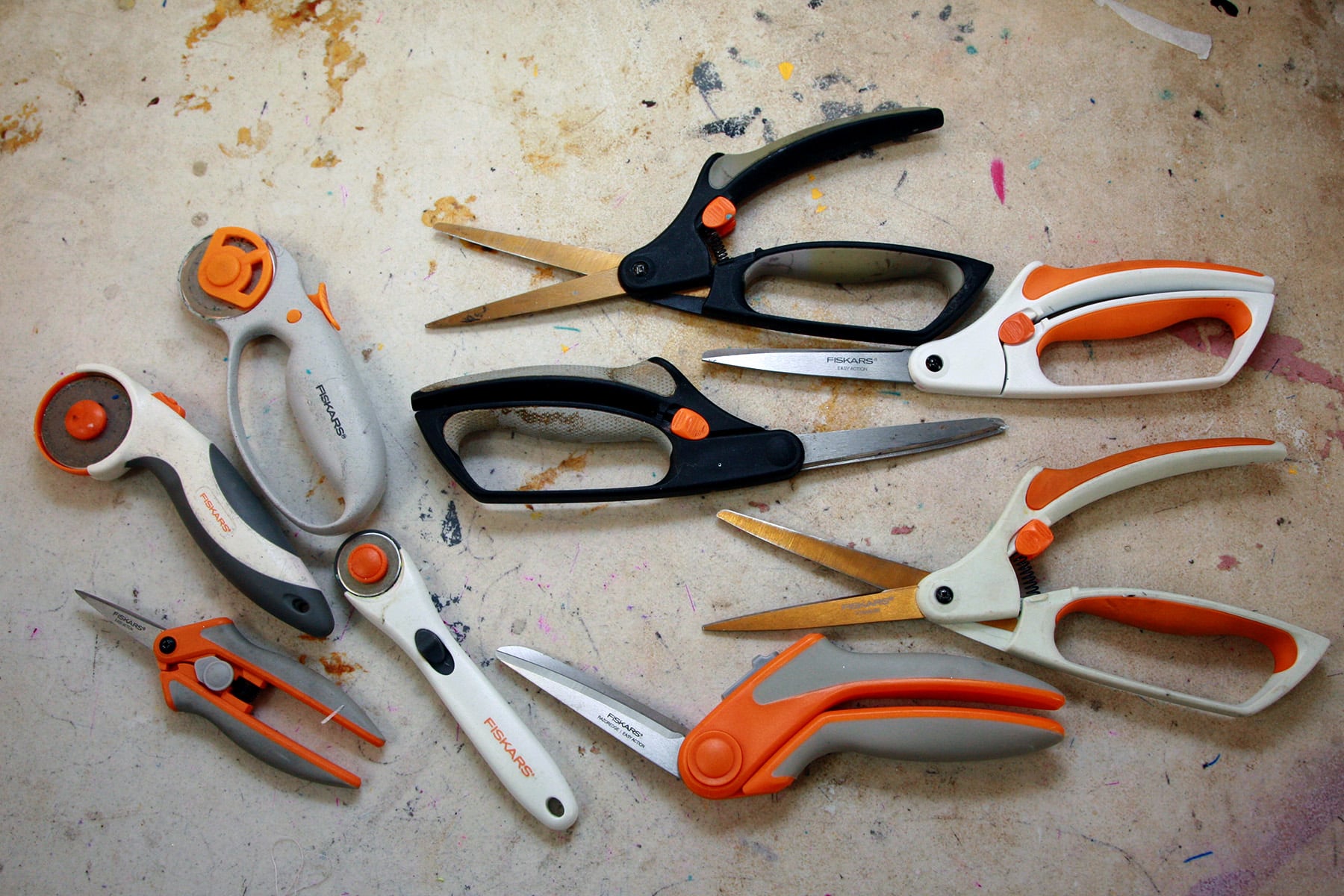
Supplies
This is going to be a giant laundry list of supplies, but a lot of it is stuff that you likely already have on hand, or can come in handy even beyond this project:
Exam Table Paper
I use exam table paper for patterning. This will allow you to trace your base pattern, make any size adjustments you need, and adjust for the base style.
You can buy rolls of exam table paper on Amazon and at medical supply stores, for between $2-5 per roll.
Sometimes, you’ll be given a choice of 2 papers. One is cheaper and uncoated, and the other is slightly more expensive, and is coated.
Go for the cheaper roll, as wide as you can. 21" is great, 18" will usually do.
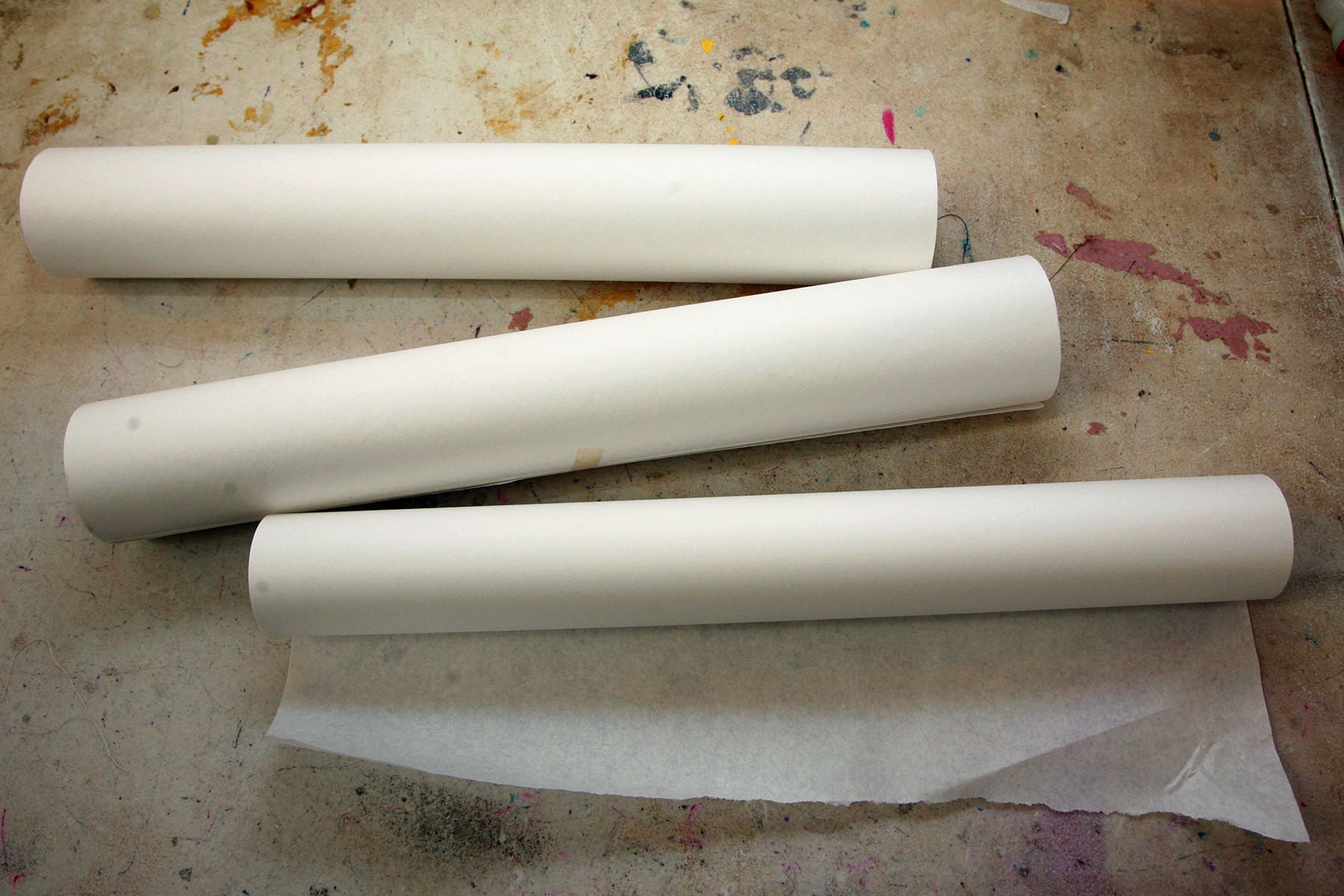
A Pattern - or Patterns
You’re going to want to use at least one pattern for this project, possibly two.
Bodysuit Pattern
There are very few bodysuit patterns out there that involve cups, so you’re very likely going to need to alter a regular bodysuit pattern.
(That said, feel free to google “bodysuit pattern with cups”, and see if you can find anything that suits your needs!)
As an old-school Kwik-Sew fan, I used 2797 for the base bodysuit pattern - it does not have cups / underwire though, so I altered this pattern and used my usual (hand drafted) cup pattern for the cups.
Otherwise, I recommend looking for a pattern from a company that specializes in spandex garment patterning:
Specialty Sportswear* is generally well regarded, and might have something. (Their site is a bit clunky to look through, though!
My Childhood Treasures* on Etsy has a couple different options.
Jalie's Leotards and Unitards section has some options, but may need some adjustment for style.
*Note: I've never used one of their patterns, I'm linking as a resource, not as a recommendation. Always check reviews on what you're looking to buy!
Bra Cup Pattern
You can buy bra patterns / bikini patterns, or you can pull the seams on a favourite old bra and use it for a pattern.
There are WAY too many options to get into, so I’ll just say that you should get something that says it’s sized to fit you, is a full cup, and that uses a regular / standard underwire - not a demi cup or whatnot.
Sew Sassy has some good bra patterns. The second one on that page would work well for this bodysuit (B530), and it has the added bonus of telling you exactly which of their underwires work with it!
Otherwise, just Google or search etsy to find a bra cup pattern you like. You’ll just need the cup - so don’t worry about what the band style is, etc.
Fabrics
Before buying your fabric, I recommend reading my post on the Types of Stretch Fabric for Spandex Costuming, for a good understanding of the options, the quality you’re looking for, etc.
Here’s what I used:
Nylon Lycra
I used a shiny baby pink Nylon lycra for the bodysuit in this tutorial.
You can use pretty much any 4 way stretch Lycra - just be sure to use high-quality materials, for the best and most durable results!
Swimsuit Lining
Because I used a light coloured spandex - and would be embellishing the crap out of it, later - I used swimsuit lining.
Light coloured spandex can lead to some ... embarrassing.. issues, so I definitely recommend using lining for them.
Even beyond that - for any colour of bodysuit - lining will make the suit look better when wearing it, adds some warmth, and provides a much better base if you’ll be embellishing it later.
Rhinestones and glue can add a ton of weight, after all!
Repositionable Spray Adhesive
When I was still costuming professionally, I went through a TON of spray adhesive.
For this tutorial, I use it to bond the outer fabric to the lining, so each section can be treated as one piece.
My adhesive of choice is Odif's 505 Temporary Fabric Adhesive.
One important quality it has is that it does NOT soak though, so you won’t get weird glue dots showing on the good side of your fabric. It’s also easily repositioned, without leaving residue.
As a note: There are other repositionable spray adhesives on the market. Some are just as good, but WAY more expensive (sold as stencil glue), and some just aren’t as good.
If you’re able to get the 505, use it!
Rosin Paper or Brown Craft Paper
I buy brown craft/kraft paper on rolls at Staples / Business Depot, or Rosin Paper from hardware stores.
This will be used as a drop cloth for spray gluing your fabric pieces etc. The spray adhesive is a BEAST to wash off anything, so it’s better to just make sure to cover everything!
I like to spray a light coating on my “drop cloth” paper before I get started with spraying pattern and fabric pieces, and let it dry a bit.
This creates a mildly tacky surface to hold onto whatever I’m spraying. This prevents me from spraying the good side of the fabric, which can fly up and flip over when being sprayed with the glue.
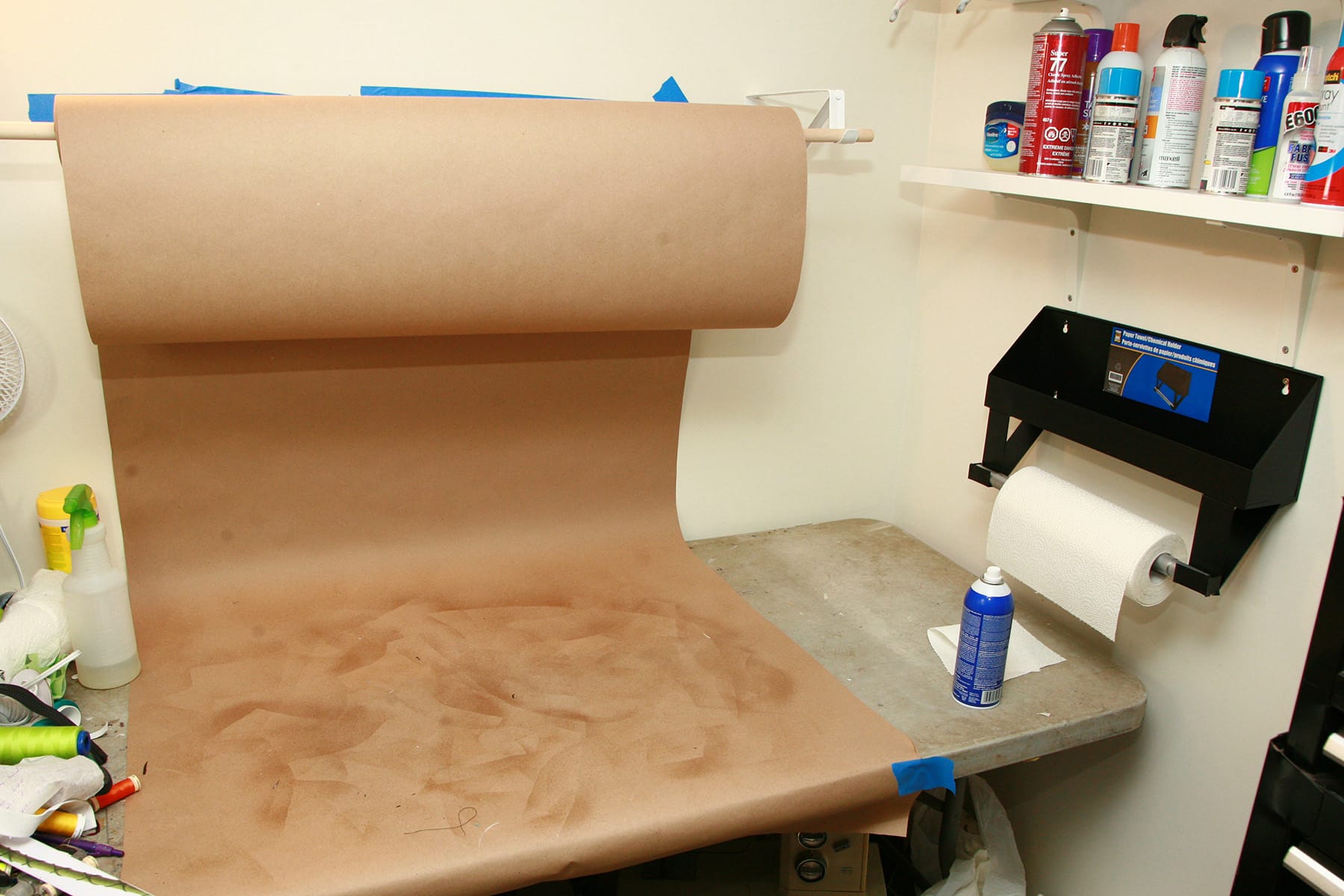
Underwires and Underwire Channeling
For underwires, use “regular” or “standard” underwires that are designated for your cup/band size.
As far as the channeling goes - this is a tube of fabric used to contain the underwires.
It can come curved - as pictured - or straight. I tend to order mine from Sew Sassy, but you can generally find it in bra making supply shops, on etsy, etc.

1 Zipper - Optional
If you’re using a zipper in your bodysuit, you’ll need one - either a 20-22" Invisible Zipper or a 20-22" Lightweight Nylon Zipper.
My post How to Sew an Invisible Zipper shows you how to sew both types.
Note: If you’re making this bodysuit as a base for the Lover bodysuit, I HIGHLY recommend using a zipper - a lightweight nylon one, specifically.
Thread
I use two types of thread - a regular spool for my sewing machine, and serger cones for the serger.
I highly recommend using a polyester thread, rather than a cotton one.
As far as regular thread brand goes, I prefer the Gutterman and Mettler brands for sewing with spandex... but that’ll largely be a matter of personal preference.
If you’re using a serger for the body seams, you don’t need any special thread (like wooly nylon), just normal cones of polyester serger thread work fine.
Elastic
I recommend using ⅜" Braided White Elastic for this project.
Everything Else
Amazingly, there are a couple items that don’t require extra commentary from me!
You will need:
Measuring Tape
Pens or markers.
Share the Love!Be sure to take some pics of your handiwork! If you post it to Bluesky, be sure to tag us - @SpandexSimplified. Also, be sure to follow me on Pinterest, and subscribe to my free newsletter and Youtube Channel, so you never miss out on any of my nonsense. (Well, the published nonsense, anyway!) |
How to Make an Underwire Bodysuit
I recommend reading through the whole tutorial at least once before getting started - there’s also a video walk through near the bottom of this post!
Patterning
Before doing anything else, use the directions in How to Measure for Spandex Costuming to get an accurate set of measurements.
Using those measurements, decide which size you’ll be making your pattern - consult the sizing chart on your specific bodysuit pattern.
If needed, do any alterations for size and basic shape (wedgie proofing, sway back, etc) that you may need, following the directions in Basic Pattern Alterations.
In this case, I was starting with my basic sample size (for my dress form), but lowered the leg for a more modest cut, and shaped the back neckline to be more accurate to Taylor’s Lover bodysuit.
If you want a snap opening at the bottom, see Convert a Bodysuit Pattern for Snaps for how to convert your pattern to allow for it.
.. And if you’re adding an invisible zipper, see How to Sew an Invisible Zipper for adjustments you may need to make.
If your pattern includes cups already, skip ahead to the next section - cutting.
Altering a Basic Bodysuit Pattern for Underwires
First, a caveat:
There are many, many variables that come into place when making a pattern for an underwire bodysuit.
ALWAYS make a practice bodysuit - or two - and use the results to hone your pattern for your specific body shape, size, cup size, etc. You are very unlikely to get everything right on the first go.
Odds are, you’ll make your first trial suit and decide that you want your underwires higher or lower, closer together or more spaced out.
I’m providing you with a really easy starting point - the benefit of making things yourself is that you can make any adjustments you need!
Once you have a well fitting pattern, trace it out on your exam table paper.
Draw a line - perpendicular to the center front fold - at the level of the chest. This will generally be the fullest point of the chest of the pattern, usually at or under the arm hole, and may be marked on your original pattern.
I definitely recommend using a Square Ruler for this.

You want it to be about ¾" from the center fold, with the “inside” corner of the underwire (usually with a coloured tip) closest to that fold.
Top to bottom, you’ll want to situate your underwire such that your guesstimate of the “nipple line” of the cup is over the line you drew.
This will usually end up with the line going through about the halfway mark (top to bottom) of the underwire, as pictured.
When it doubt, start with the underwire centered over the line. As I mentioned - this is just a starting point!
Trace around the outer edge of your underwire, then draw perpendicular lines joining either side of the underwire to the pattern, as pictured.

When it doubt, make this a bit longer than you think you’ll need. If it ends up too long, you can always shorten it at the top of the shoulder, when you’re done.
Adding more length is more difficult.

Cut and Prepare the Fabric
Once you’re happy with your pattern, cut it out.
Bra Cup Pieces
Using sharp scissors and the pattern you want to use (sized to your measurements!), cut out your outer cup pieces and your lining.
Depending on the pattern, the lining shapes and sizes may be the same as the cup pieces... or they may be their own thing.
Either way, each cup piece should be cut as two mirror-image pieces, it’s easiest to do this by folding your fabric and cutting through both layers at once.
See my post How to Cut Spandex to learn everything you need to know about cutting stretch fabrics.
Before sewing the cups, I recommend spray bonding the outer fabric to either lining or bra foam / thin Neoprene.
Bra foam or neoprene makes for a much more structured cup - it’s the way I did the vast majority of bikinis, back when I was doing fitness posing suits.
It prevents any “headlights” issues, and hides the use of any padding. On the other hand, it’s also a bit more annoying to sew with.
Either way, you’ll want to use a light layer of spray adhesive on the wrong side of your outer fabric.
Carefully press those pieces down to either the lining fabric or bra foam, making sure to not warp or stretch the fabric out as you smooth everything out.
Then cut the pieces out, pair them off into the appropriate sets, and set them aside.

Bodysuit Pieces
You should have 2 or 3 pieces that for the main bodysuit - the front, and either one or two back pieces, depending on whether your pattern has a center back seam, or a center back fold.
Additionally, you’ll have the front strap pieces.
As with the cup pieces, I recommend bonding the bodysuit pieces to swimsuit lining - and this is especially important if you’re making the Lover bodysuit.
Not only do you really want lining when using lighter coloured spandex, it’s also a good support for all the weight you’ll be adding to the suit, in terms of glue, rhinestones, sequins, and beads.
I like to cut the pattern pieces from the main body fabric (greatest degree of stretch going across the body, not up and down!), spray the wrong sides of each fabric piece with the repositionable adhesive, then smooth them out on the lining.
Also: As mentioned in the supplies section, I DEFINITELY recommend using rosin or craft paper as a drop cloth, to keep glue off *everything* that surrounds your work space.
I’ll give the center of the paper a bit of a spray and let it dry for a bit, to provide a tacky surface for holding the fabric pieces in place. This prevents the edges from flipping up while you’re spraying them - and avoids getting glue on the *right* side of your fabric!
As you’re laying your main body pieces out, keep in mind that you want to lay them out such that the greatest degree of stretch in the lining is *also* going around the body.
As you smooth out the main fabric piece, it’s best to lift and reposition, than to just smooth out. You don’t want either of the fabrics involved to stretch or warp to match up with the other.
Once you’re happy with it, cut each piece out.

Make the Cups
Arrange your bra cup pieces in sets, matching the top cup pieces with the appropriate bottom piece.
At this point, I recommend flipping the top pieces face down onto the bottom pieces.
While it doesn’t matter much for MOST outer fabrics (with an obvious right side vs wrong side), this can help prevent you ending up with duplicate cups, rather than mirror image cups.
One set at a time, stitch the tops of the cup pieces to the bottom pieces (right sides together), easing the fullness as you go - you want the edges to line up at the end.

If you’d like, you can top stitch the seam down, for a smoother, flatter look to the outer cup seam. (Not pictured)
With the right side facing up, flip the seam from the bottom half of the bra cup to rest under the top piece of the bra cup.
WITHOUT STRETCHING much - just enough to get the seam to lay flat together, as you go - stitch a straight seam close to the original seam, as a top stitch. This should be about ¼" away from the original seam.
Once all 4 cup pieces are done - and you’ve checked that you have mirror-image pieces for both lining and outer fabric - pair them off.

Zig zag along the top and bottom edges to hold the pieces in place.

Sew the Cups to the Body
Match each of the cups with the cutout that it’s supposed to attach to.
One at a time, fold each cup and cutout in half, to find the halfway point of both the cutout, and the bottom (round) edge of the cup.
Pin each cup to the corresponding cup cutout - right sides together - at the halfway mark.

WITHOUT stretching either piece (beyond just stretching just enough to ease the curve into place!), stitch together with either a straight stitch (close to the edge) or a zig zag (on the edge).

Once you get there, remove the pin, hold the ending points together, stretch just enough to match the seams up, and sew to the other side of the cup.

Repeat with the other bra cup and band piece.

Sew the Underwire Channeling
This can be complicated to explain, so be sure to check out the video at the end of this post if I’m not super clear:
Get The Positioning Figured Out!
Decide which cup you’re working on first, and lay it right side up, with the rest of the body piece laid flat across it, rather than extending out from the cup. You can pin the body back if needed, to prevent any unwanted movement.
Note: The first photo below is before I flipped it over, sorry!
With the bottom edge of the cup facing you, you’ll be working from the right side to the left side.
Cut a piece of underwire channeling that is slightly longer than the bottom edge of the cup, and line it up with the top right corner of the bottom edge of the cup you’re working on.
You want the right side (fuzzy, usually) of the channel facing up, and the curve of the channeling curving AWAY from the bra cup, as shown.
You’ll be stretching the inner curve / right edge of the channeling to line up with the bottom edge of the cup, while stitching the left side / outer curve of the channeling.

Attach the Channeling
Line the raw / open end of your channeling up with the underarm curve / top of the bottom edge of the cup.
Keeping the RIGHT side of the channeling lined up with the bottom edge of the cup, start a seam along the LEFT side of the channeling.
The inside of the curve of the channeling should be stretched to match the bottom edge of the cups, as you do a straight stitch seam along the longer (outside
of the curve) edge of the channeling.
This will become the bottom edge of your cup - it’s really important to keep it as smoothly curved and even as possible, and to keep to just inside the edge of the channeling.
Remember, it’s a tube - if your seam wanders closer to the center, you could block access for the wire, later.

Repeat on the other cup.

Sew the Channeling Down
Once you have sewn the underwire channeling down to both cups, flip the channeling back.
Pull the body away from the bra cups - if you pinned it in place for the last step, unpin it now.
You should have the former bottom edge of the bra cup now resting against the main body of the inside of the bra cup, with the channeling facing up, as pictured.
The first channel seam you sewed should be very close to the bottom / outer edge of the cup, without actually hanging over the edge.
Stitch the once-bottom edge of the channeling down to the inside of the cup along the very edge of the channeling, making sure that nothing is bunching or catching underneath the seam.
The fabric between the seam and the new bottom edge should all be flat and even - ease it as you go.
The distance between the two seams will serve as your underwire channel, and will be visible on the outside of the suit. The more even - and evenly spaced - the two seams are, the more professional the visible channel will look.
It can take a bit of practice!

Repeat on the other cup.

Attach the Straps
Lay one of the straps against one of the cups, right side to right side.
Line one raw end of the strap with the short, flat top end of the cup, centering it on that section of the cup piece.
Serge - or use a straight stitch and zig zag - to secure the strap in place, then repeat on the other bikini cup.

Assemble the Bodysuit
If your back has a center back seam, place your two back pieces together.
Following the directions in How to Sew Spandex With or Without a Serger, sew the center back seam.
If your back has a zipper, install it now - finishing the bottom of the seam. (See How to Sew an Invisible Zipper for how to sew either an invisible zipper OR a lightweight nylon coil zipper).
Once your center back has been dealt with - if applicable - lay the back bodysuit piece out on your work surface, right side up.
Lay the front bodysuit piece over the back piece, right side facing down. (Right sides together).
If you want to pin the side seams together, you can do that at this point - I generally don’t bother.
Sew the side, crotch, and shoulder seams. Trim all your threads, then turn the bodysuit right side out.

Apply the Leg and Arm Hole Elastic
If you haven’t yet read How to Apply Elastic, do so now.
You’re literally just going to do what I show there, in the leg openings:

When it comes to the arm holes, I treat the arm hole on this (a back arm hole, the strap, and the underarm portion of the bra cup) as a regular arm hole
The one caveat being - you will likely need to trim a corner at the outer edge of your underwire application, to create a smooth curve the whole way around.
(This is that short perpendicular line you drew when adjusting the pattern for an underwire, if applicable).
Anyway, measure the elastic for the arm hole, as I show in the elastic tutorial:

Sew your elastic into the arm hole, being sure to completely encase the open edge of the underwire channeling that meets up with the underarm:

Repeat on the other side:

Once you’ve got the elastic sewn in to both legs and arms, flip the arm elastics and stitch them down as directed in that post.

You can either do this with the right side facing up - pictured above - or the inside facing up - as shown below.

Check it out - you’re almost done!

Insert the Underwires
Thread your underwire in from the insides of the wire channels, at the center of the bodysuit.
Typically, the coloured coated end of your wires will be the centre, so they will go in last - you want the outside, non-coloured end to go in first, so it’ll end up at the outside of the suit.
Gently push these through the channels, until they touch the top outside edges of the cups, where the elastic is already stitched down.

You will need this “no wire” space in order to apply elastic. You do NOT want to accidentally hit the wire with your sewing machine needle!

Apply the Neckline Elastic
Following the neck elastic directions in How to Apply Elastic, measure the elastic for your neckline.

From there, I pin at the shoulders - measuring the straight line from the center front, to each shoulder. When pinning, be sure there aren’t any twists in the elastic between the shoulder points, and the center front.

Stretch both the garment and the elastic - together...
Remove the shoulder pin, stretch the garment and elastic again, and sew as far as the center front seam.
Be sure to flip the seam between the cup and the strap, so it’ll be sewn down in the same direction it was sewn on the armpit side.

Sew your elastic across the tops of both underwire channels - removing the pin before you get to it - then stretch everything together again and sew to the next shoulder pin.
Once you get to the shoulder, remove the pin. Hold the end of the elastic - with no twists in it - against the center back seam/zipper, stretch it all, and sew to the end of the elastic.

So close to being done - it’s all easy from here!

You don’t want your finishing stitches to go through the zipper itself.

Finally, flip the elastic over and zig zag down into place.

Congrats, you just made an underwire bodysuit!

Underwire sitting a bit too low? Move it up on the pattern. Too high? Move it down a little... etc etc.
If it’s perfect as it is, you’re good to go - just check out my post on Proper Care of Spandex Costumes to ensure the best longevity for your work!

Getting Started with Spandex Costuming
Looking for more posts on the basics of spandex costuming?
Basic Pattern Alterations
Colour Theory for Spandex Costuming
How to Measure for Spandex Costuming
Spandex Costuming Tools & Supplies
Types of Stretch Fabric for Spandex Costuming
How to Cut Spandex
Spandex Costuming Design PrinciplesHow to Sew Spandex With or Without a Serger
How to Sew Sleeves
... and be sure to check out our Table of Contents for an organized listing of all of our posts.
Thanks for Reading!If you loved this tutorial - or have any questions about it - please leave a comment below! I'll do my best to answer any questions you may have. |




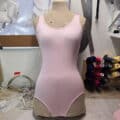

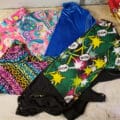
By any chance, do you make these for sale? I really want to make a TS Lovers bodysuit but i definitely lack the skills to make the actual bodysuit. I can handle the rhinestones and sequins but not the construction.
I don't, sorry!
This is an amazing tutorial. Thank you. How do you design the Cup part of the Bra? The pieces magically appear with no instruction. Is there another tutorial that covers this? Regards Armida
They didn't "magically appear", I went over patterns in the post.